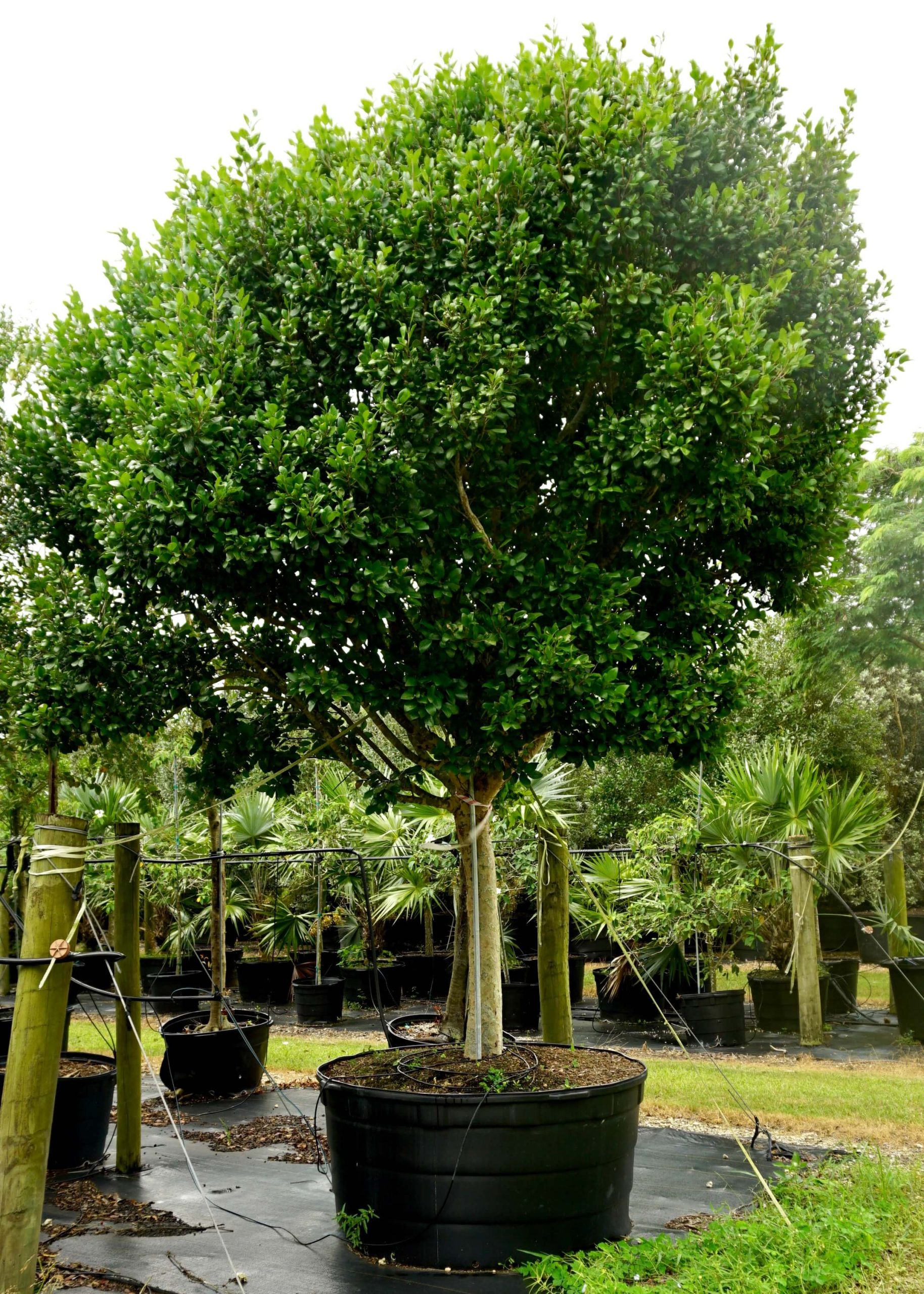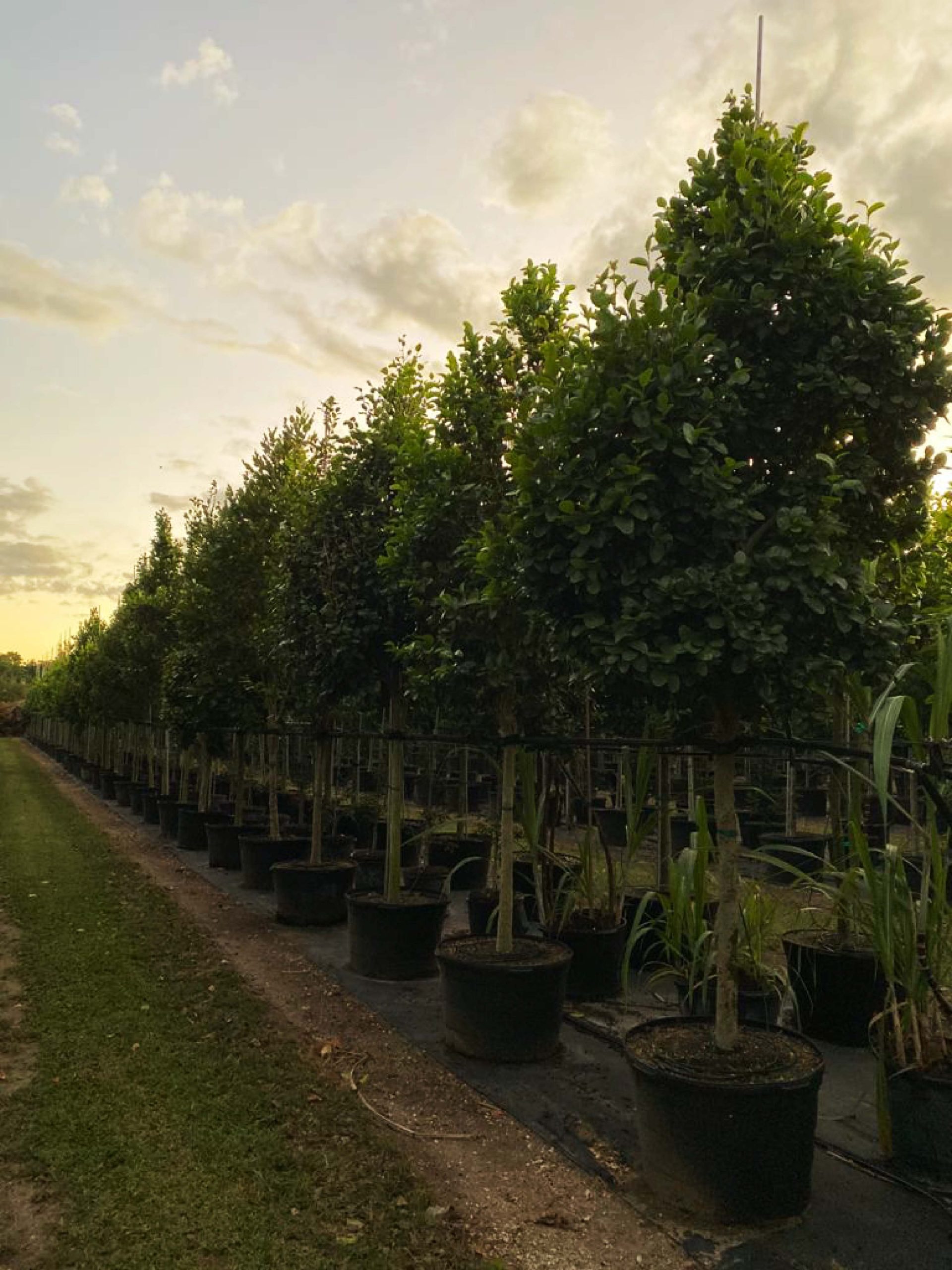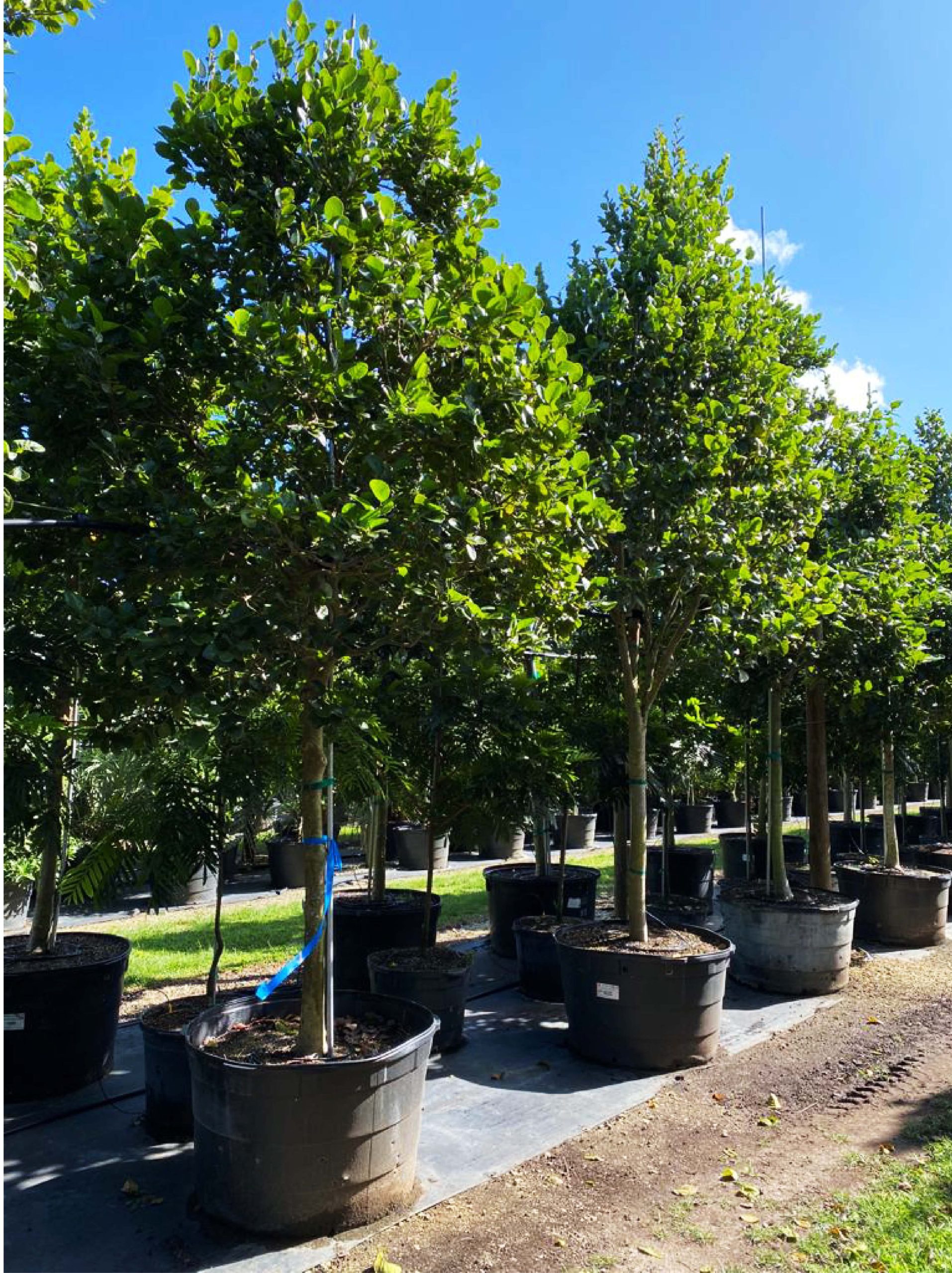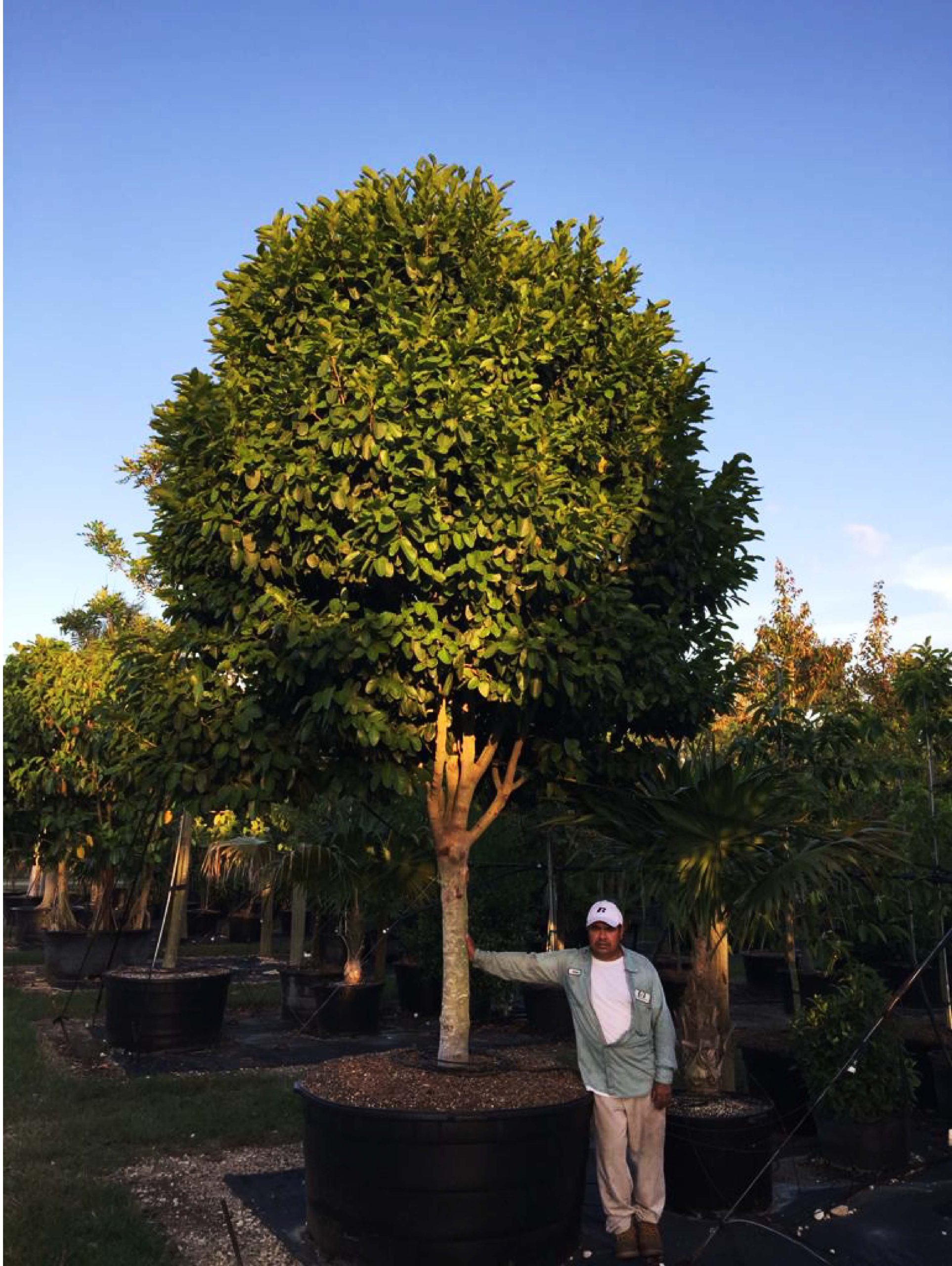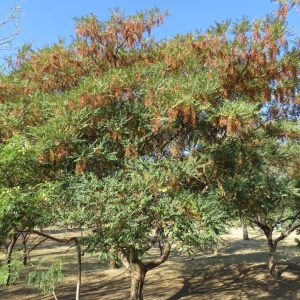Description
The Coccoloba Diversifolia, commonly known as the Pigeon Plum tree, is one of our native trees endemic to the coastal regions of the southeastern United States, the Bahamas, and the Caribbean. It is particularly common in Florida, where it thrives thanks to the state’s subtropical climate. Plus the Pigeon Plum is well-adapted to the regions, including sandy soils and coastal hammocks, making it a resilient and versatile species in its native range.
Members of the Polygonaceae family, including the Pigeon Plum tree and its common relative, the sea grape (Coccoloba Uvifera), have become key elements in Florida and the Caribbean landscape. Given that these trees thrive in warm, tropical climates, they excel under these particular environmental conditions where temperatures are consistently warm and humidity is often high. One of its key features that allow this adaptation is the leaves, which are efficient at capturing sunlight and managing heat.
Coccoloba Diversifolia Tree Description
The Coccoloba Diversifolia is considered a medium-sized tree with an upright, densely foliated, and round evergreen crown. It typically reaches a height of 15 to 25 feet with a spread of 20 to 35 feet, though it can grow larger. Young Coccoloba Diversifolia trees for sale appear pyramidal until the multiple trunks begin to spread, eventually forming a round, vase-shaped crown in older trees. The branches usually grow to a width equal to the tree’s height. Naturally, it has a multi-trunk structure, but it can be trained into a single-trunk form. The bark of the Pigeon Plum is also very attractive; it is smooth, grayish, and mottled, becoming more textured and furrowed as the tree ages and peeling off in broad flakes.
One of the highlights of the Pigeon Plum tree is its leaves, which vary considerably in shape and size, even on the same tree. This characteristic leads to its name ‘diversifolia,’ meaning ‘diverse leaves.’ The leaves are typically broad, and leathery, and range from oval to oblong, often with a glossy surface. Although it is an evergreen, the 2- to 4-inch-long leaves drop uniformly in March but are quickly replaced by bright red new growth. In early summer, the Coccoloba Diversifolia tree produces small, whitish-green flowers on 2- to 6-inch-long racemes, followed by 1/3-inch-long, dark red to purple, berry-like fruits. The single-seeded, somewhat edible fruits ripen in late fall and winter and are very attractive to birds.
Landscape Applications in Florida of Pigeon Plum Tree
The Pigeon Plum in Florida, known for being a resilient and adaptable tree, is well-suited to a variety of growing conditions. It prefers well-drained soils but adapts to a range of soil types, including sandy, loamy, and clay soils. The Coccoloba Diversifolia is also tolerant of slightly alkaline conditions, which are common in coastal areas. Honoring its native tree status, the tree thrives in full sun to partial shade, but full sun exposure is ideal for optimal growth. Additionally, once established, the Pigeon Plum has a high tolerance for drought conditions and a good tolerance to salt, making it suitable for planting in coastal areas where salt spray may be a problem.
Pigeon Plum Bush vs. Pigeon Plum Tree
The Coccoloba Diversifolia bush, with its multi-trunk tendency, is easily recognizable in its form, which is naturally characterized by multiple stems or trunks growing from the base. This results in a denser, more compact growth habit. The Pigeon Plum bush is ideal for use as a hedge or screen.
On the other hand, the pigeon plum tree, commonly referred to as the standard (STD) tree form, needs to be cultivated to grow with a single trunk in order to achieve a more traditional tree-like appearance. In landscaping, it is an excellent choice for narrow areas such as sidewalks, medians, parking lots, and shorelines, and is suitable for providing shade in patios. Pruning is required to shape it into a tree form and to control its growth.
Coccoloba Diversifolia Tree for Sale at TreeWorld Wholesale
At our tree farm nursery, we have Pigeon Plum trees for sale in multi-trunk (bush) and standard form, available in sizes from 25 to 300 gallons.
If you need further product information or want to contact us regarding our portfolio, you can email us at info@treeworldwholesale.com, schedule a visit at our headquarters at 24605 SW 192 Ave., Homestead, FL 33031, or call us at 305-245-6886.
🌳More popular and beautiful plants: Koelreuteria

